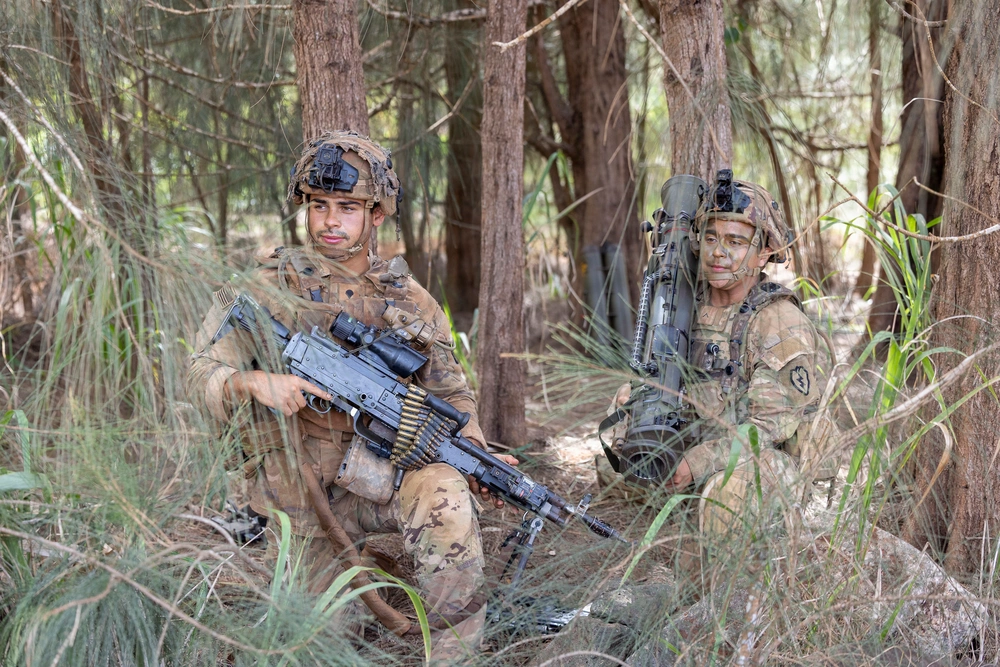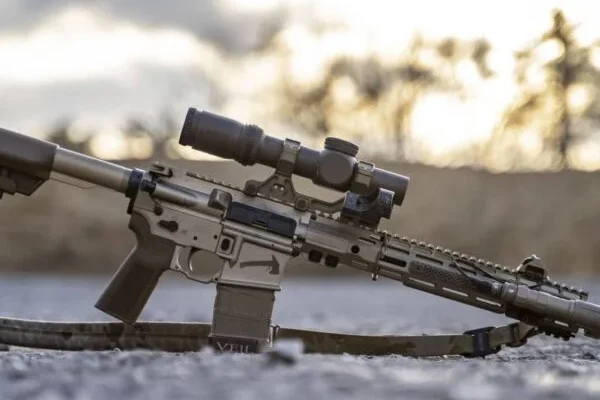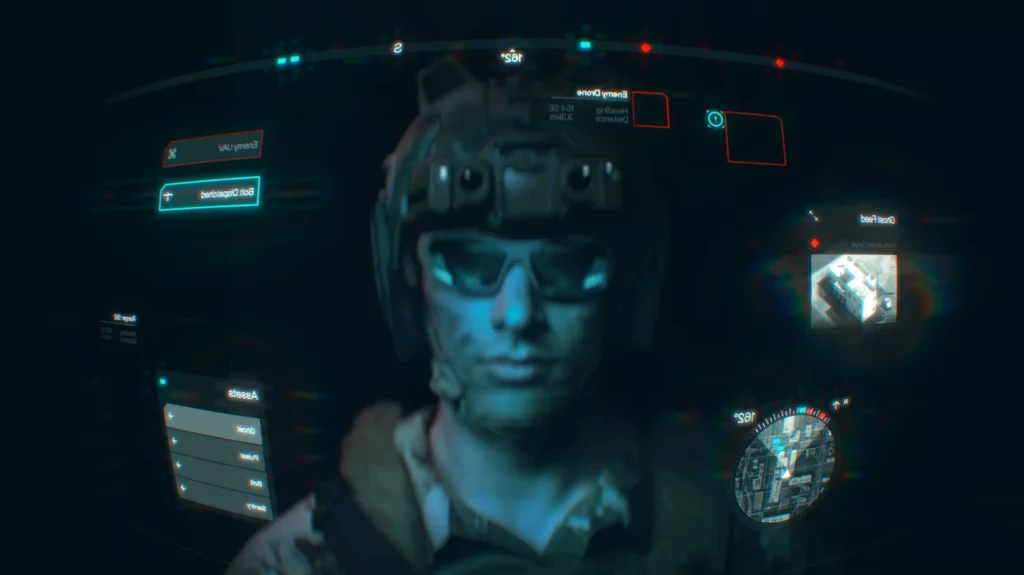We all know movies, TV, and videogames get stuff wrong, especially when it comes to the military. In fact, when a movie is even quasi-realistic, it becomes legendary and a classic. Most don’t try that hard, but even those that try often get things wrong, especially when it comes to the technical details of military equipment.
There are five common tropes that military movies, TV shows, and video games get wrong. Here’s your dose of reality.
Suppressors/Silencers
Suppressors have slowly become more common with modern military forces and the Marine Corps infantry issues suppressors to every grunt these days. According to TV, movies, and even videogames, a suppressed weapon is whisper-quiet. I played Call of Duty the other day and with a suppressed rifle, shot one enemy two feet behind another and no one knew. Suppressors don’t work that well.
Suppressors capture and slow gas to prevent the explosion from occurring at the tip of the barrel. This reduces the volume of a gunshot drastically, but doesn’t fully silence it. For one, some of that blast can still escape depending on the suppressor. Second, most rifle rounds move at supersonic speeds, which creates a supersonic crack when a round is fired. This creates noise loud enough to still ring your ears. We also get the additional loud noise of your gun’s action slamming back and forth.
Suppressors aren’t whisper-quiet, but a suppressed shot is much quieter than your standard unsuppressed one. Suppressors improve communication and, in terms of infantry warfare, makes a grunt tougher to locate, especially at several hundred yards.
Machine guns
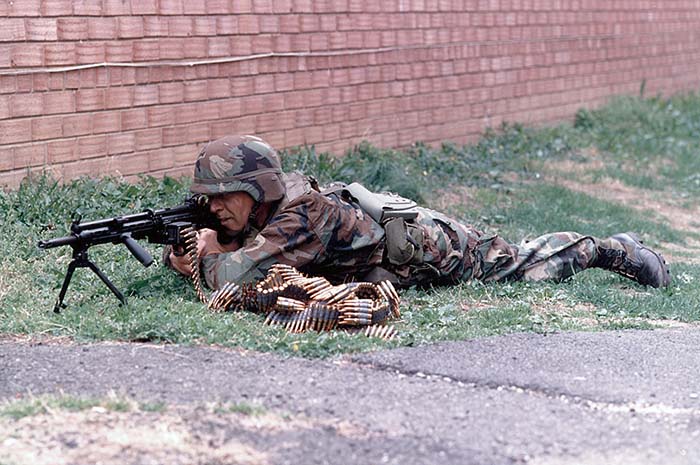
Machine guns are awesome, and I admit my bias as a machine gunner, but even a rifleman will agree with me. It used to be a joke that no one wanted to carry the machine gun, but in a fight, everyone wants a machine gun. What’s most misunderstood about machine guns is how they are used.
Machine guns are designed to allow an infantry force to eliminate the enemy by suppressing them and keeping them from maneuvering and hopefully accurately firing back. They certainly create casualties, but their main purpose is to throw enough lead to overcome the enemy’s ability to maneuver and engage.
On the screen, machine guns are often portrayed as bigger, larger assault rifles that shoot faster and more. They are often fired from the shoulder, but in real life, machine guns are best used from the prone position for greater stability and accuracy.
They are often portrayed as inaccurate, and when fired from the shoulder, that’s mostly true, but in reality, machine guns can be exceptionally accurate when fired from a supported position. Machine guns are tools designed for specific tasks, and aren’t just large assault rifles that look cool in Rambo’s hands.
Related: The rise and fall of the submachine gun
Grenades
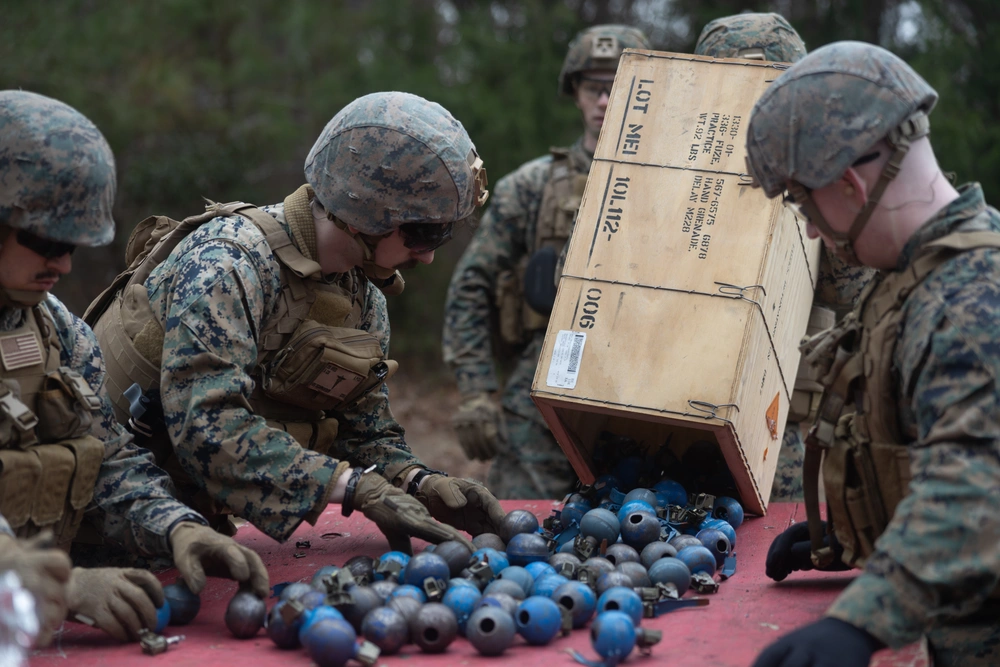
Grenades are a brilliant tool that helps you clear rooms, fight off an assault, conduct an assault, clear a trench, and more. For their effectiveness, they are fairly small, lightweight, and reliable. The infantry loves grenades. With that in mind, movies and videogames often go out of their way to portray them as weapons of mass destruction.
Grenades don’t provide that big of an explosion – there is no giant fireball that the hero can conveniently get away from – but they do create a big bang that throws chunks of metal in every direction. They are certainly a brutal tool to toss into a room, but it’s completely possible a threat will be unaffected by the shrapnel – although the explosion, concussion, and noise are inescapable. Grenades can be the world’s deadliest flashbang but somehow avoid killing anyone.
While they are a great tool, they are not the massive explosion-creating machine they appear to be in movies and TV. An M67 frag grenade, even a dozen of them, aren’t going to cause an Abrams tank to turn into a burnt and blackened hulk of steel.
Related: Did you know that sports influenced the design of grenades?
Nightvision and thermal optics
I blame the Splinter Cell videogame for tricking an entire generation into thinking night vision rules. The first time I fired up a PVS-14, I expected to hear that Splinter Cell hum. That didn’t happen. Instead, I got a grainy, green-tinted view of the world that needed constant adjustment to make things look clear.
Night vision relies a lot on the light created by the moon and stars and works best when it’s so bright you barely need it. Admittedly, it’s a tremendous advantage to have, but it’s nowhere near as bright and clear as movies often make it look. You can still feel a little clumsy bumping around in the dark, especially if you’re trying to see both near and far at the same time.
Thermal optics aren’t traditional night vision but work by detecting changes in temperature. They’re great for finding someone who doesn’t want to be found, but unlike Splinter Cell’s night vision, you can’t navigate the world with them. Additionally, when placed on guns, they work well until the barrel gets too hot and whites out the whole thing.
Both are great tools, but they don’t work nearly as well as movies and – even worse – videogames make them seem.
Handguns
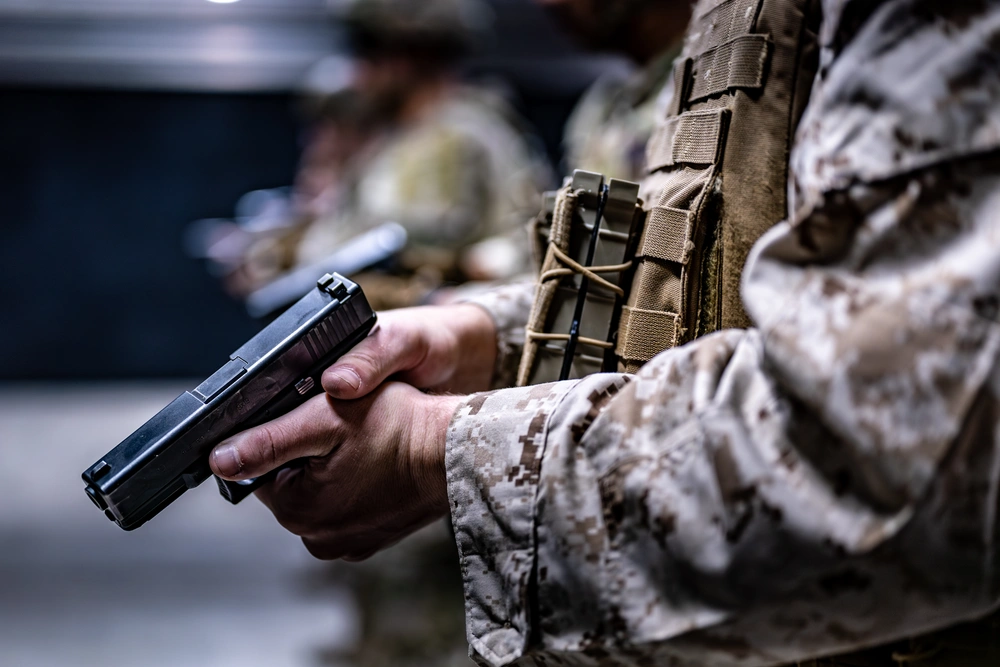
If I was going into a fight and you made me choose between an extra magazine for my rifle or a handgun, I’m going to pick the rifle magazine. Handguns in the military are one of the least used weapons because they aren’t that useful.
Handguns are typically issued to officers because, to this day, they act more as status symbols. Specialty positions also get handguns; I had one as a machine gunner, for example. The most useful part of having a handgun was that in Afghanistan it fulfilled the requirement of being armed all the time: if I had a handgun, I didn’t have to take my M240 to the bathroom.
The reason why handguns are so rarely used is that most combat takes place outside of their effective range. Additionally, even when you’re within the effective range of a handgun, your rifle is the better option.
Reality isn’t always as fun or exciting as movies, TV shows, and videogames portray it. These are the five misrepresentations found in military media, but I guarantee there are more I’ve missed. That’s just the nature of entertainment.
Feature Image: Arnold Schwarzenegger in “Predator.” (20th Century Fox, Davis Entertainment)
Read more from Sandboxx News
- Frosted misery: A Navy SEAL in SERE School
- Let’s rank America’s fighter jets (and some of its other planes) based on their top speed
- SOCOM has now included AI in its top-tech wish list
- B-1 Lancers deploy over northern Europe to train on simulated bombing strikes and send Russia a message
- The complicated legacy of War Thunder in the military community






